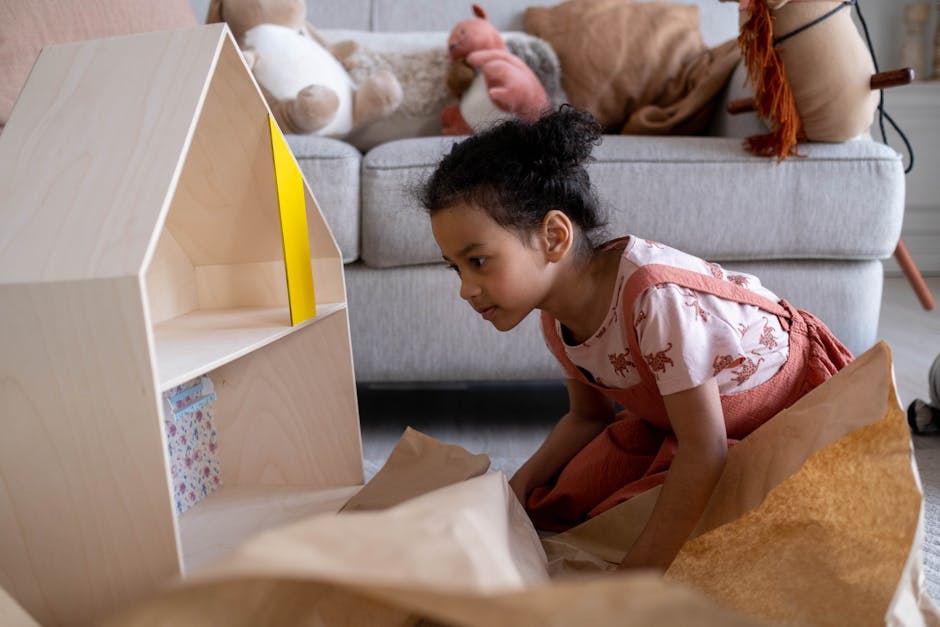How to Create a Toy Rotation System to Keep Kids Engaged
Are you tired of stepping on toys scattered around the house? Or perhaps you’re looking for ways to keep your child engaged without continually buying new toys? A toy rotation system might just be the solution you need! In this blog post, we’ll explore the benefits of toy rotation, how to set it up, and tips for success. Let’s dive in! 🎉
Table of Contents
1. Why Implement a Toy Rotation System?
2. How to Set Up a Toy Rotation System
3. Tips for Successful Toy Rotation
4. Frequently Asked Questions
5. Conclusion
Why Implement a Toy Rotation System?
Before jumping into the how-to, let’s understand why a toy rotation system is beneficial:
1. Less Clutter: With fewer toys out at any given time, your home will feel less cluttered. This makes cleaning up a breeze! 🧹
2. Increased Engagement: Rotating toys keeps them fresh and exciting for your child. It reduces overstimulation by having too many choices and helps them focus on the toys available.
3. Encourages Creativity: Limited options encourage children to use their imagination, finding new ways to play with the same toys.
4. Teaches Responsibility: With fewer toys, kids learn to take care of what they have, fostering a sense of responsibility and care.
How to Set Up a Toy Rotation System
Setting up a toy rotation system is easier than you might think. Here’s a step-by-step guide:
Step 1: Declutter and Sort
Start by going through all the toys. Remove any broken or outgrown toys. Group the remaining toys into categories, such as blocks, dolls, puzzles, etc.
Step 2: Decide on Rotation Frequency
Decide how often you want to rotate the toys. This could be weekly, bi-weekly, or even monthly. The frequency might depend on your child’s age and interest level.
Step 3: Create Toy Sets
Divide the toys into several sets. Each set should contain a mix of different types of toys to ensure variety.
Step 4: Storage
Store the toy sets in labeled bins or boxes. Make sure they are out of sight but accessible for easy rotation. Remember, out of sight doesn’t mean out of reach — you want to be able to rotate them easily!
Step 5: Introduce the System
Explain the new system to your child. Make it exciting by presenting the rotation day as a special event where they get “new” toys to play with. 🎈
Tips for Successful Toy Rotation
Here are some additional tips to ensure your toy rotation system is a hit:
1. Be Flexible: If your child is particularly attached to a toy, it’s okay to leave it out longer. The system should work for your family, not the other way around.
2. Observe and Adapt: Pay attention to which toys are played with the most and which are ignored. This can help you refine your toy sets over time.
3. Include Books and Art Supplies: Don’t forget to rotate books and art supplies. These are great for stimulating creativity and learning.
4. Involve Your Child: Let your child help choose which toys to include in the next rotation. This empowers them and makes them feel involved in the process.
Frequently Asked Questions
Q: How many toys should I have in each rotation?
A: This depends on your child’s age and interest. Generally, 5-10 toys per rotation is a good number to start with.
Q: What if my child asks for a toy that’s not in the current rotation?
A: It’s okay to bring out a toy if they specifically request it. The goal is to maintain engagement, not strict adherence to rules.
Q: Can I include electronic toys in the rotation?
A: Absolutely. Including a mix of electronic and non-electronic toys can provide a balanced play experience.
Conclusion
Implementing a toy rotation system can transform the way your child interacts with their toys, fostering creativity and responsibility while reducing clutter. Not only does this system keep your child engaged, but it also gives you peace of mind with a tidier home. Start your toy rotation journey today and watch the magic unfold! ✨
